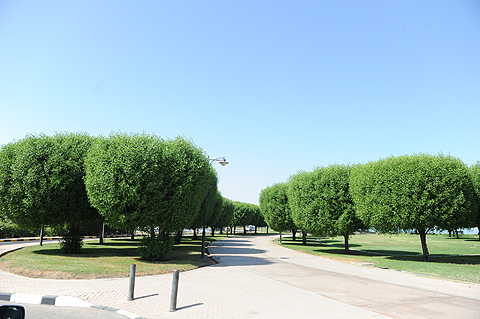
The Conocarpus tree was brought to Kuwait in 1988 for greening the landscape and main roads. It spread easily because it is able to withstand harsh environmental factors such as high and low temperatures and can be easily trimmed and planted, especially on the streets. It is also known for not being affected by vehicle emissions and is used as fencing and windbreaks in open desert areas.
Recently, some people pointed fingers at this tree as a source of trouble after the heavy rain in Kuwait and the arrival of winter. Some people blamed the tree's roots for penetrating water and sewage networks and disrupting the flow of water. Some specialists advise not to plant this tree near buildings, because of its large consumption of water, which may cause damage to the infrastructure of water and drainage pipes.
Researcher at the Kuwait Institute for Scientific Research Dr Hani Al-Zalzalah advised not to plant the Conocarpus tree near houses and buildings "because of the thirst of its root system for water, which may damage water and sanitation networks, especially if they are dilapidated".
 Conocarpus tree
Conocarpus treeBut Zalzalah warned against uprooting any tree planted in a wrong location close to government buildings without coordination with specialists in the field of agriculture, in order not to damage service lines close to the roots. He said the Conocarpus is good for improving the properties of desert soil and turning it into agricultural soil.
Some people also accuse this tree of causing allergies, but there is no evidence or proof of this. I believe that we should not accept information without scientific evidence. For planting Conocarpus near houses, I think the approval of the environment authority must be made to ensure that all parties, whether official or homeowners, are committed to safe agriculture in a way that does not conflict with service lines.
I hope that the relevant government agencies will stop the cultivation of Conocarpus within urban areas and plant these trees outside cities as windbreaks and near coasts in order to increase the green area and provide aesthetic views, and stop soil erosion due to salinity and wind.
By Muna Al-Fuzai
[email protected]



